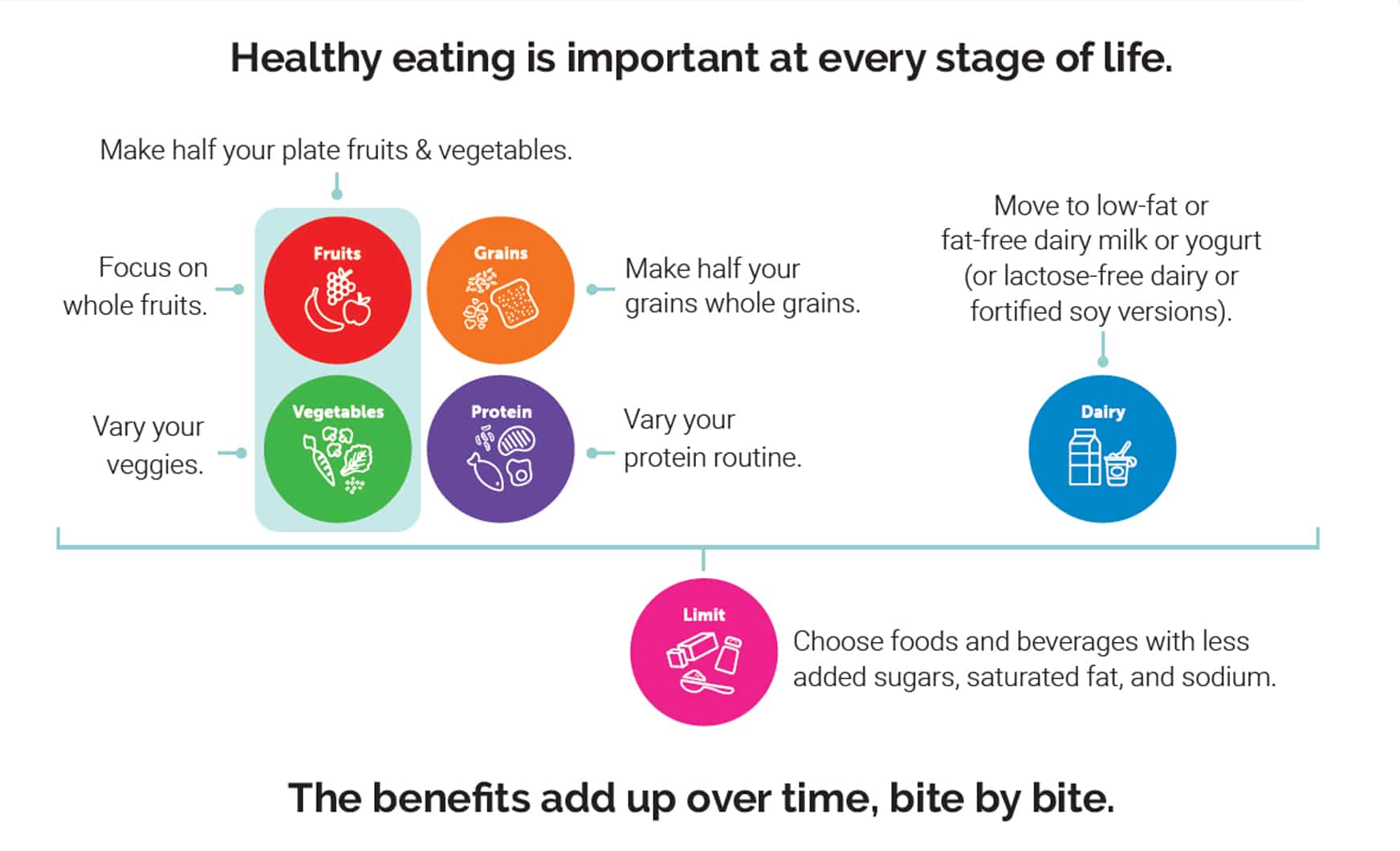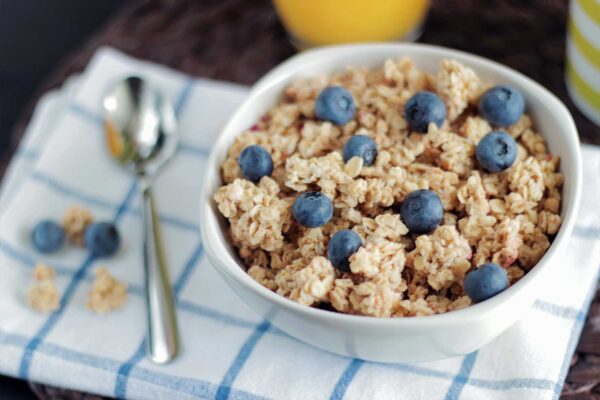Family Health & Wellness

After a year of Covid-19, many families have experienced both positive and negative changes in their daily and weekly schedules. As we begin to return to our normal routines, some bad habits can be hard to break. We sat down with Bryan Roy to talk about family health and wellness, focusing on screen time, family activities and nutrition.
Screen Time
“Many of us have been using screen time to keep in touch with friends and family,” says Bryan Roy. We may have experienced an increase in screen time for a variety of reasons, including remote work, online school, virtual hang outs with friends and family, and as a way to keep entertained during quarantine and isolation. Now that social gatherings are returning thanks to Covid-19 vaccines, stepping away from the screen can help improve our overall happiness and health.
 “Both adults and children are experiencing an increase in screen time,” according to Harvard Pilgram. “The bigger problem lies in screens replacing positive activities like exercise, socializing, and sleep.” Consider the following recommendations to help you with balancing screen usage with your family:
“Both adults and children are experiencing an increase in screen time,” according to Harvard Pilgram. “The bigger problem lies in screens replacing positive activities like exercise, socializing, and sleep.” Consider the following recommendations to help you with balancing screen usage with your family:
One media-free meal per day. Try to have at least one meal per day without screens. Screen time, and even background television during meals, have been linked to eating junk food and increased weight in children, as food ads for low-nutrition options can influence what preschoolers want to eat. Conversations during mealtime can help to shape a child’s social-emotional health and ease stress for the whole family.
Two screen-free hours before bed. Setting screens aside for two hours before bedtime makes it easier to fall asleep and wake up on time. The “blue light” from TVs and other screens disrupt the natural sleep cycle. For younger children, it also helps to save the screens for after naptime. For older kids, device alerts can be an issue as well. Try using a real alarm clock and keeping their phone out of the bedroom.
Three ways to measure screen use. The amount of time spent using a screen is just one of three ways to measure the health of technology use. The quality of the content and being there to help your child process what’s on screen are two important factors that can help create meaningful interactions.
Measuring Screen Use
“Because limited screen time is so hard right now, try thinking in terms of your child’s overall health and how they spend their time in general,” according to Dr. Dave Anderson from the national nonprofit group, Child Mind Institute. Consider having a “development checklist” to ensure that time spent on screens also helps with your child’s development.
“A good general rule is for every two hours of screen time, you should have 30 minutes of physical activity,” advises Roy. With so much of our lives lived online, especially in the past year, it’s important to stick to a ratio that promotes both online interactions and physical activity.
 From video interaction to online games to at-home creative projects, monitored screen usage can have benefits. Screen time can be broken down into three categories: 1) time using a screen, 2) quality of screen content, and 3) who you use a screen with. Not all screen time is equal. Aim for quality screen time, such as educational and interactive content that’s age appropriate for your child.
From video interaction to online games to at-home creative projects, monitored screen usage can have benefits. Screen time can be broken down into three categories: 1) time using a screen, 2) quality of screen content, and 3) who you use a screen with. Not all screen time is equal. Aim for quality screen time, such as educational and interactive content that’s age appropriate for your child.
Did you know that approximately 30% of teens sleep with their mobile devices in their bed, with similar numbers waking up during the night to check their device? Parents aren’t too far behind, with a quarter of them waking up during the night to check their phones and mobile devices. You can learn more about the impact of screen time on children’s sleep schedules on our Children’s Health & Wellness blog.
Screenless Family Activities
It can be tempting to continue with the at-home routine and watch television or a movie at night during or after family meals. Consider making one weeknight a week into a screenless family activity night – it can be as simple as taking a walk together, riding bikes around the neighborhood, or learning a new skill or activity as a family. A game of catch or Frisbee doesn’t have to be intense to yield the benefits of spending time together away from the screen.
 Ready to test your green thumb? Gardening can be a great activity for the whole family. “The happiness and stress relief that gardening provides is a great thing to share with loved ones,” according to UNC Health. From reducing stress to building self-esteem, gardening even has benefits for children. “Early exposure to dirt has been linked to numerous health benefits, from reducing allergies to autoimmune diseases.”
Ready to test your green thumb? Gardening can be a great activity for the whole family. “The happiness and stress relief that gardening provides is a great thing to share with loved ones,” according to UNC Health. From reducing stress to building self-esteem, gardening even has benefits for children. “Early exposure to dirt has been linked to numerous health benefits, from reducing allergies to autoimmune diseases.”
Taking time for activities together and creating healthy habits for your family can have lifelong benefits. Learning new activities together and taking a break from the screen can help reduce stress and increase sense of belonging and support. Eating nutritious meals together can also boost your family’s mood and interactions with one another. “Families who eat meals together tend to be healthier,” according to Mayo Clinic. “Turning off electronics during meals or family time eliminates distractions.”
Nutrition
“Make every bite count,” is the mantra for the newly released nutritional recommendations from Dietary Guidelines for Americans. Try looking at your family’s current eating routine and finding a few ways you can switch to more nutritious options.

Focus On Whole Fruits:
 Fruit for breakfast is a great way to add more fruit to your diet. Try adding your favorite fruit to cereal or yogurt, adding bananas or chopped apples to pancakes, or mixing raisins into hot oatmeal.
Fruit for breakfast is a great way to add more fruit to your diet. Try adding your favorite fruit to cereal or yogurt, adding bananas or chopped apples to pancakes, or mixing raisins into hot oatmeal.
Make it easier to snack on fruit by keeping ready-to-go sliced options in the fridge for a quick snack.
For meals, you can make a quick and easy fruit salsa that’s perfect for topping your protein of choice or add fruit like apples or strawberries to a salad.
Vary Your Veggies:
 Incorporating vegetables to meals and snacks can be simple, try prepping some ready-to-eat raw vegetables and keeping them in the fridge, or making a healthy and tasty soup from vegetables in your fridge or pantry.
Incorporating vegetables to meals and snacks can be simple, try prepping some ready-to-eat raw vegetables and keeping them in the fridge, or making a healthy and tasty soup from vegetables in your fridge or pantry.
Another easy way to add healthy greens to your meal is by making a stir-fry with either fresh or frozen vegetables as a family meal.
Feeling adventurous? Choose a vegetable your family doesn’t eat often (like these cauliflower steaks) and test a recipe from a cookbook, website, or friend.
Make Half Your Grains Whole Grains:
Consider whole-grain options for breakfast and enjoy a whole-grain-based hot or cold cereal. Be sure to opt for true whole grains like rolled oats instead of pre-packaged instant oatmeal, which tends to be highly process with added sugars. Try this quick and easy overnight oats recipe for a delicious and nutritious start to your day.

Substitute your usual sandwich bread for whole-grain pita or other whole-grain flatbread. You can also try changing things up by using whole-wheat tortillas or naan bread. When it comes to whole wheat and whole grain breads, Nature’s Own whole wheat, Rye bread, and Pumpernickel bread are typically the lowest sugar bread per slice options. “Whole wheat and whole grain breads are a good option for healthy eating and for those watching their sugar intake,” says Roy.
You can get creative with your own trail mix using whole-grain cereal or snack on some whole-grain crackers with turkey, hummus, or avocado for a healthy snack.
Vary Your Protein Routine:
 Lean proteins offer you a healthy alterative to high-fat meats. Try lean beef cuts like sirloin, top round, or flank steak. You can roast lean pork tenderloin or loin chops for dinner, or slice them up to use in salads, sandwiches or even tacos.
Lean proteins offer you a healthy alterative to high-fat meats. Try lean beef cuts like sirloin, top round, or flank steak. You can roast lean pork tenderloin or loin chops for dinner, or slice them up to use in salads, sandwiches or even tacos.
Aim for fish or seafood instead of meat twice a week. Tuna sandwiches or salads (watch the mayo!) are easy-to-make meals. For dinner, grill fresh or frozen tilapia or salmon, or give fish tacos a try!
Meatless meals can be tasty and budget friendly, too. Make “Meatless Mondays” a weekly ritual and try a bean-based vegetarian chili, lentil soup. tofu and vegetables, or adding nuts like walnuts and almonds to your favorite salad.
Move To Low-Fat or Fat-Free Dairy, Milk or Yogurt:
When it comes to dairy intake, go for low-fat or fat-free dairy options when you can, and add it to oatmeal or pureed vegetable soups instead of water. You can also use low-fat options for your smoothies or even adding some to scrambled eggs for a boost of protein.

“Eggs are not your enemy,” says Roy. While there is a common misconception that eggs elevate cholesterol, recent studies show that eggs in moderation do not raise the risk of heart disease.
The nutrients in dairy can be beneficial for a variety of life stages. Looking for an alternative? Try lactose-free dairy milk or yogurt that’s low-fat or fat-free or fortified soy versions. Check your local grocery store for healthy alternatives like skyr, kefir, and Greek yogurt to find high protein, low fat and low sugar options.
“With all choices – moderation and diversity of nutrients is important,” advises Roy. “Moderate fat and sugar intake and moderate animal proteins, but don’t worry so much about moderating vegetables,” says Roy. Remember, when moving to low-fat options, be sure to read the label for sugar content to ensure that sugar isn’t being added to make food taste better.
 You can visit MyPlate.gov to find, try and save healthy recipes for you and your family. The recipes are searchable by course, nutritional focus, healthy diet options, cost to make, and much more. This resource guide features over 1,000 different options you can easily incorporate into your family’s weekly meal routine!
You can visit MyPlate.gov to find, try and save healthy recipes for you and your family. The recipes are searchable by course, nutritional focus, healthy diet options, cost to make, and much more. This resource guide features over 1,000 different options you can easily incorporate into your family’s weekly meal routine!
Looking for more options? Visit Budget Bytes for budget friendly options in plenty of categories including weekly meal prep ideas, vegetarian options, and one-pot recipes, all broken down by cost per recipe and cost per serving.
“Clinical studies show that intentional meal planning can help improve weight maintenance and aid weight loss efforts,” says Roy.
Family health and wellness is a critical part of our lives. Limit screen time when you can, especially before bed, and create a weekly routine where you ditch the screen for an outdoor activity like family walks, sports, or gardening. Remember that family meals don’t have to be difficult! Start by substituting one or two items per week for healthier options and use the resources above to help prepare fast and easy nutritious family recipes. As the new school year approaches, let’s commit to making healthy habits a part of our daily and weekly routine.
Clinician Contributor:
—
Disclaimer: All information presented on this website is intended for educational purposes only and not intended to replace your individual medical advice. Please review this information with your clinical team to ensure it is appropriate for your individual medical needs. The information contained is not intended to diagnose, treat, cure or prevent any disease.

